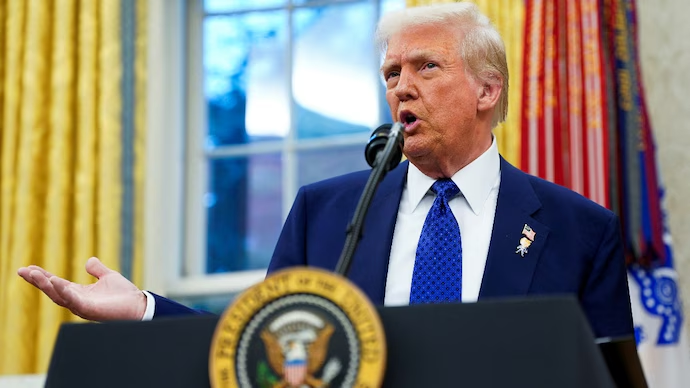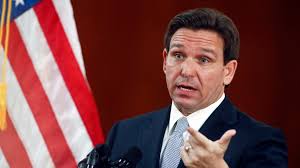In an unprecedented move to reduce the size of the U.S. federal government, more than 65,000 employees—over 3% of the federal workforce—have agreed to a buyout offer issued by President Donald Trump. If approved, this initiative will become the most significant single job reduction in American history.
Understanding the Buyout Offer
President Trump extended the offer to more than 2 million federal employees, allowing them to continue receiving their salaries for about eight months if they voluntarily leave their jobs. As of Friday, 65,000 employees had accepted the offer, marking a significant increase from the 40,000 reported just two days earlier.
Legal Challenges and Uncertain Future
The mass buyout plan is currently facing legal hurdles and has been temporarily blocked by a judge. However, if the courts allow it to proceed, the scale of job losses will surpass previous mass layoffs in U.S. history, such as those by IBM and Sears in the 1990s.
Who is Affected?
The buyout offer was extended to nearly all federal employees, with exceptions for those in the military, postal service, and national security sectors. As of late 2024, the U.S. government employed over 3 million people, excluding active-duty military personnel.
Historical Context: Largest Job Cuts in U.S. History
Mass layoffs have occurred in both the corporate and public sectors, but Trump’s initiative is unprecedented in size. Here are some of the largest workforce reductions in U.S. history:
Corporate Job Cuts
- IBM (1993): Laid off 60,000 employees following an $8 billion loss.
- Sears (1993): Cut 50,000 jobs and closed 113 stores.
- Citigroup (2008): Eliminated 50,000 jobs during the financial crisis.
- General Motors (2009): Closed five factories and cut 47,000 jobs.
- AT&T (1996): Laid off 40,000 employees, 14% of its workforce.
- Kmart (2003): Shut down 326 stores, resulting in 35,000 job losses.
- Circuit City (2009): Declared bankruptcy and eliminated 34,000 jobs.
Government Job Cuts
- U.S. Army (2011): Eliminated 50,000 jobs.
- U.S. Air Force (2005): Reduced workforce by 40,000.
- U.S. Postal Service (2002-2010): Cut 30,000 jobs annually for multiple years.
Trump’s buyout plan, if widely accepted, could lead to over 200,000 federal job losses, making it the largest workforce reduction in U.S. history.
The Shift in Workforce Layoffs Over Time
Large-scale layoffs were once seen as a last resort for struggling businesses. In the 1970s, mass firings were associated with failing companies. However, by the 1990s, layoffs became a common corporate strategy to cut costs and restructure businesses. CEOs who embraced these tactics earned nicknames such as “Neutron Jack” for their aggressive job-cutting policies.
Today, layoffs are a frequent part of corporate and government restructuring. In 2023, 58% of Fortune 100 companies reported layoffs, a stark increase from just 5% in 1979.
Trump’s Government Restructuring Plan
President Trump has consistently advocated for reducing the size of the federal government. His administration established the Department of Government Efficiency, led by billionaire Elon Musk, to oversee budget cuts.
On his first day in office, Trump issued executive orders that:
- Ended remote work arrangements for federal employees.
- Mandated a full-time return to office.
- Imposed a hiring freeze.
- Implemented a policy making it easier to fire government workers.
Earlier this week, over 2 million federal employees received an email outlining the buyout offer. The message suggested that employees who accept the buyout could “take a vacation, watch movies, and relax” while still receiving their salaries and benefits until September 30.
What Are the Financial Implications?
The Trump administration claims that these job reductions could save the government up to $100 billion. However, critics argue that cutting such a significant portion of the workforce could lead to service disruptions and inefficiencies in government operations.
Concerns and Criticism
The buyout plan has faced strong opposition from Democratic lawmakers and labor unions. Critics warn that the downsizing could negatively impact essential government services and create chaos for Americans who depend on them.
Key Concerns:
- Service Disruptions: With fewer employees, federal agencies may struggle to provide timely services.
- Legal Uncertainty: Some lawmakers question whether the president has the authority to implement such drastic job cuts.
- Job Security Concerns: Critics fear that the promised eight months of salary might not be honored.
- Replacing Experienced Workers: Some worry that departing employees could be replaced with less qualified individuals.
Statements from Lawmakers
Senator Tim Kaine warned federal employees not to accept the buyout, stating, Do not be fooled by this guy.
Representative Jasmine Crockett accused the administration of planning to replace departing workers with unqualified loyalists.
Meanwhile, labor unions have expressed fears that this “purge” could cause widespread issues.
What This Means for Federal Employees
If you are a federal employee considering the buyout, here are some key factors to consider:
Pros:
- You receive eight months of salary without working.
- Potentially more time to search for a new job or switch careers.
- Freedom to relocate or retire early.
Cons:
- Uncertainty about future government benefits.
- Loss of stable employment with pensions and healthcare.
- Potential difficulty in finding a new job in a competitive market.
The Bigger Picture
The federal government is the largest employer in the U.S., with over 2.4 million employees, excluding the U.S. Postal Service. If Trump’s initiative succeeds, it could set a precedent for future administrations looking to reduce government spending by cutting jobs.
Final Thoughts
The Trump administration’s buyout plan is a bold and controversial move that could reshape the federal workforce for years to come. While some see it as a necessary step toward efficiency, others worry about the long-term consequences for government services and job security.
For federal employees, the decision to accept the buyout is not an easy one. While the short-term financial benefits are appealing, the long-term risks are significant. As legal challenges continue, the future of this initiative remains uncertain.




























0 Comments